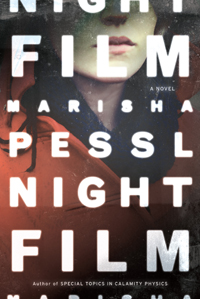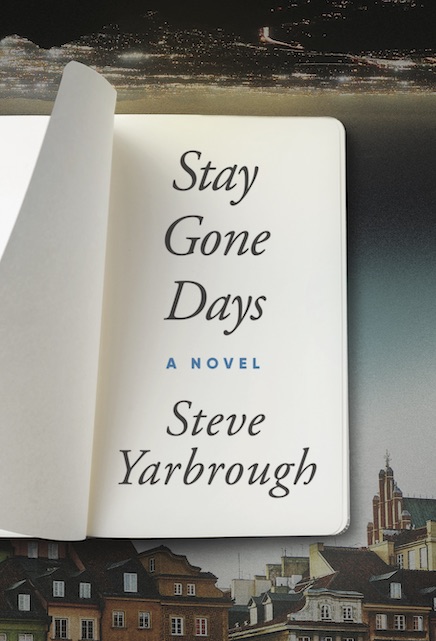Flickering Images of Truth and Lies
The ambiguous nature of cinema lies at the dark heart of Marisha Pessl’s second novel
Movies are mysterious things. Real people, material objects, and objective truths are transformed into images that flit across walls in darkened rooms. Is the result fact or fiction? Real or imagined? The same may be said of thoughts in the human mind, and this similarity has proved fertile ground for authors and screenwriters since pictures first began to move. In Night Film, Marisha Pessl plays on the ambiguities of film and mind in a story packed with deception, misperception, and outright terror.
 Pessl earned praise—and a very large advance—for her first novel, Special Topics in Calamity Physics, which stirred both the literary and film worlds. The book is loaded with literary references, and one of its major characters is a film teacher whose mysterious death helps drive the plot. In Night Film, the mysterious death of a famous director’s daughter is announced in the first chapter via a series of fictional Internet pages, including a lengthy imitation of a Time magazine article. Such counterfeits are sprinkled throughout the book, inviting comparisons to graphic novels and creating an even more powerful cinematic atmosphere. Pessl is clearly fascinated with film, and there is little doubt that the film industry is fascinated with Pessl. There is already speculation about who will star in the screen version of Night Film, but the real question is whether any real-life director can live up to the reputation of Pessl’s fictional genius, Stanislas Cordova.
Pessl earned praise—and a very large advance—for her first novel, Special Topics in Calamity Physics, which stirred both the literary and film worlds. The book is loaded with literary references, and one of its major characters is a film teacher whose mysterious death helps drive the plot. In Night Film, the mysterious death of a famous director’s daughter is announced in the first chapter via a series of fictional Internet pages, including a lengthy imitation of a Time magazine article. Such counterfeits are sprinkled throughout the book, inviting comparisons to graphic novels and creating an even more powerful cinematic atmosphere. Pessl is clearly fascinated with film, and there is little doubt that the film industry is fascinated with Pessl. There is already speculation about who will star in the screen version of Night Film, but the real question is whether any real-life director can live up to the reputation of Pessl’s fictional genius, Stanislas Cordova.
Cordova is the force behind the action in Night Film. A world-famous director, he is known as much for the terror of his movies—they can allegedly cause insanity—as for his hermit-like existence. (He appears only through his film creations and the tantalizingly incomplete accounts of the few who have actually met him.) For investigative reporter Scott McGrath, the narrator of Night Film, Cordova is the white whale that got him blacklisted and ended his career in journalism. (Based on questionable sources, McGrath once claimed in a television interview that Cordova should be terminated “with extreme prejudice” as a dangerous predator.) The death of Cordova’s daughter Ashley in an apparent suicide prompts McGrath to try once again to capture the famed manipulator, who is “underground, looming unseen in the corners of the dark. He’s down under the railway bridge in the river with all the missing evidence, and the answers that will never see the light of day. He’s a myth, a monster, and a mortal man.”
 McGrath is joined in his quest by two young assistants, Hopper and Nora, each with their own reasons for wanting to find out what happened to Ashley Cordova. The trio is led, like so many seekers of truth, from one clue to the next through a labyrinth of lies. And everyone they encounter has secrets. “Secrets—,” thinks McGrath, “even in hardened criminals, they were just air pockets lodged under debris at the bottom of an ocean. It might take an earthquake, or you scuba diving down there, sifting through the sludge, but their natural proclivity was always to head straight to the surface—to get out.” But the tasks McGrath must perform to free the secrets may get him killed. Or worse.
McGrath is joined in his quest by two young assistants, Hopper and Nora, each with their own reasons for wanting to find out what happened to Ashley Cordova. The trio is led, like so many seekers of truth, from one clue to the next through a labyrinth of lies. And everyone they encounter has secrets. “Secrets—,” thinks McGrath, “even in hardened criminals, they were just air pockets lodged under debris at the bottom of an ocean. It might take an earthquake, or you scuba diving down there, sifting through the sludge, but their natural proclivity was always to head straight to the surface—to get out.” But the tasks McGrath must perform to free the secrets may get him killed. Or worse.
McGrath must also unravel the symbolism of Cordova’s films, which are known for their fear-instilling intensity and violence. In a 1977 Rolling Stone interview (another of Pessl’s fabricated bits of journalism), the director once stated his philosophy: “Mortal fear is as crucial a thing to our lives as love. It cuts to the core of our being and shows us what we are.” So when McGrath worms his way closer to Cordova, what he finds isn’t a sunny place. It’s a night terror, a disorienting world where the paranormal and occult become not just possible but probable, and the images flickering in the blackness may be hard truths, silky lies, or something in between.
Pessl has skillfully wedged her creation—Cordova’s world—into the gaps between the verifiable facts of the real world, providing a level of detail, and therefore verisimilitude, that is as disorienting as a well-made movie. Indeed, the reader may be tempted to search the Internet for places and people in an effort to find where reality ends and fantasy begins. And although some critics may pick at a story so laden with literary and movie references, there can be no quibble with the overall effect: Night Film delivers a both a thrill and a thought-provoking exploration of the wondrous phenomenon that is the cinema.
Marisha Pessl will discuss Night Film at the Nashville Public Library on September 12, 2013, at 6:15 p.m. The free public event is part of the Salon@615 series.


